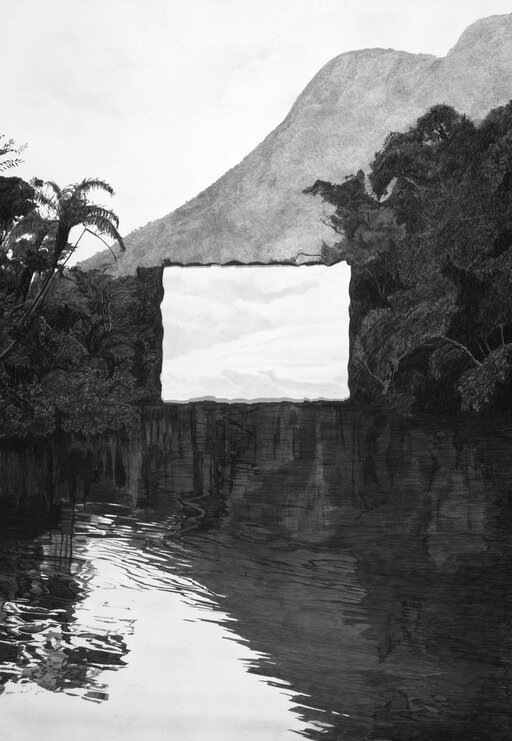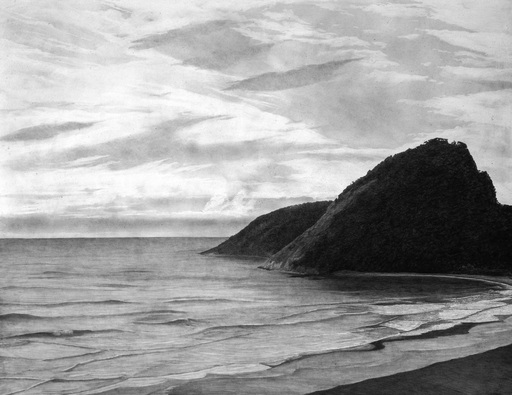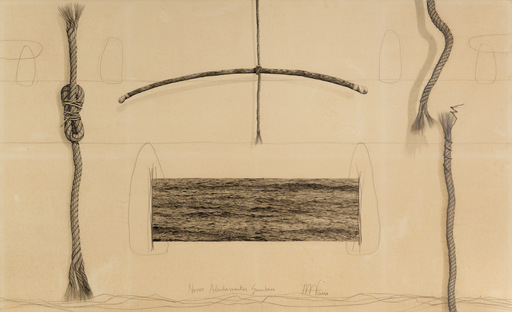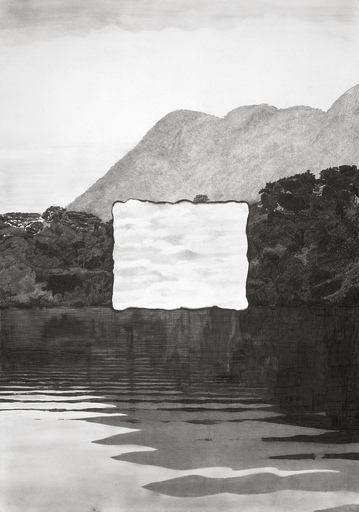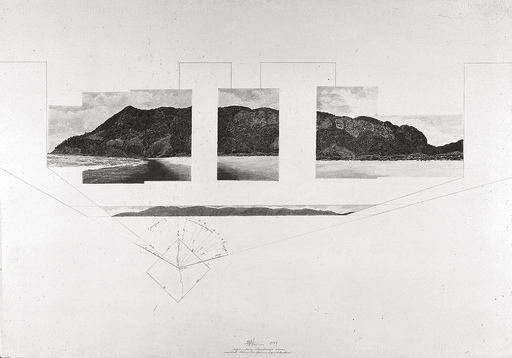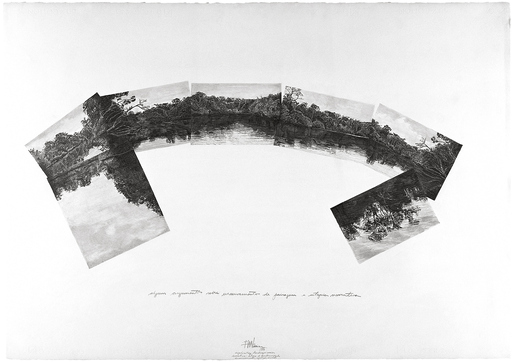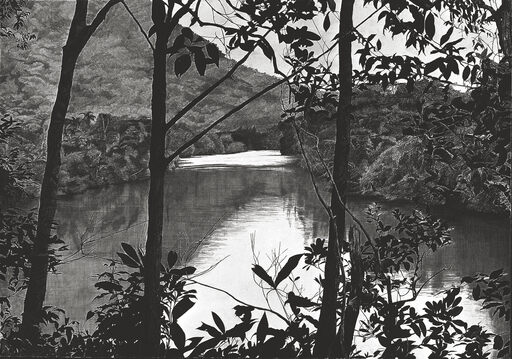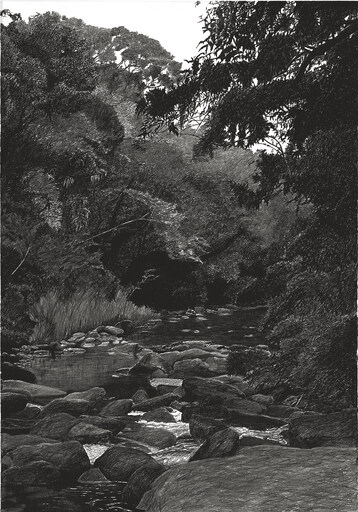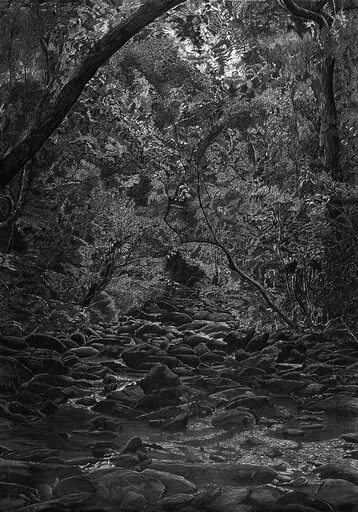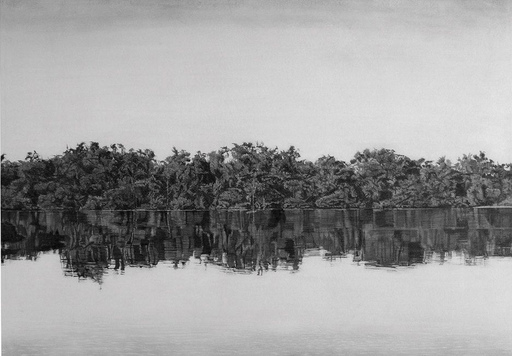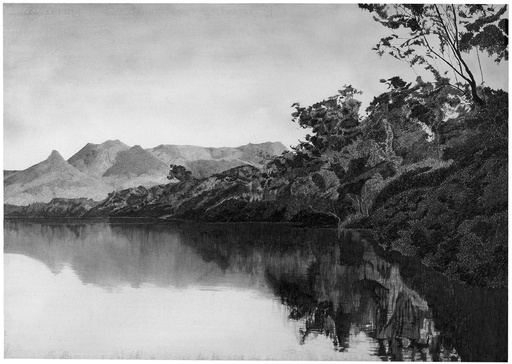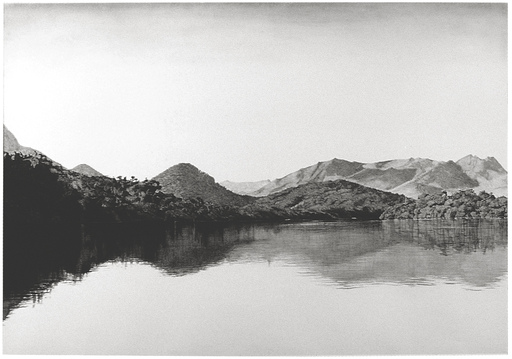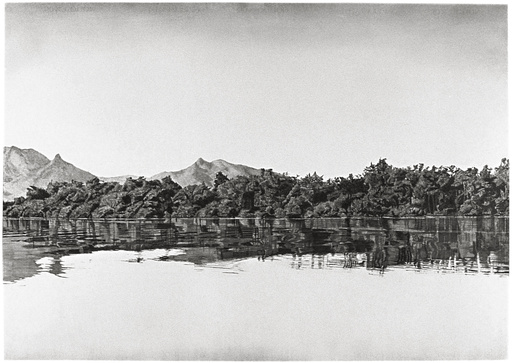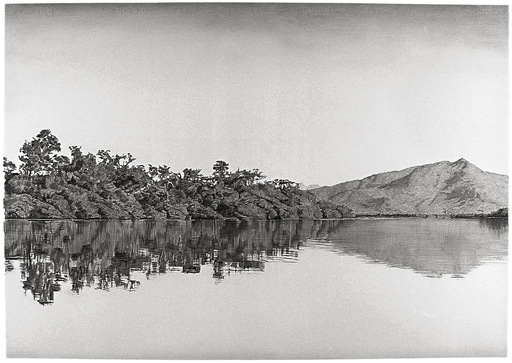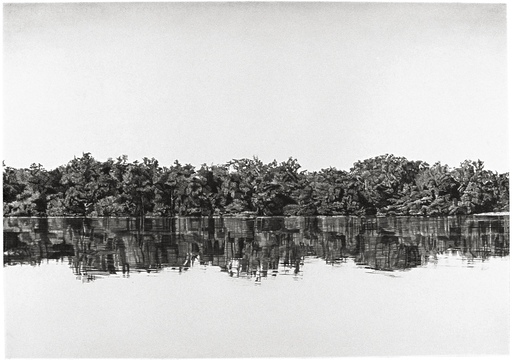Early Drawings
1984-1990
My first drawings are a conscious search for the margin, for displaced elements by our habits of perception. Starting from the simple. The basics. Without great narrative outbursts (the first exhibitions were entitled “Banal landscape”, “Landscape without narrative”). A new way of looking was built from this ground, free from pictorial schemes and tactics that have established, throughout art history, the construction of landscape representation. This explains the Cabaraquara series. And the first forest interiors with no focal point to settle the composition of the panorama. Since that time, I have followed a method of attentive looking without the command of the will, a visual strategy was practiced in “Theory of the Dérive”, by the Situationists of the 1960s, in France. The method slowly led me to find the unexpected, the surprise, the unpredictable associations. The unknown is mentally associated with chance, surprise, dialogue, possible connections, suggestions for construction that are not random, but plastic, that integrate (and disintegrate) the ways of representing nature.
Early Drawings
1984-1990
Os primeiros desenhos são uma busca consciente pela margem, por elementos deslocados pelo nossos hábitos de percepção. Partir do simples. Do básico. Sem grandes arroubos narrativos (as primeiras exposições tinham como título “Paisagem banal”, “Paisagem sem narrativa”), e dessa base ir construindo um olhar novo, comandado pela observação direta da natureza, livre dos esquemas e táticas pictóricas que convencionaram, ao longo da história da arte, a construção da representação da paisagem. Isso explica a série do Cabaraquara. E os primeiros interiores de mata em que não há nenhum ponto focal organizando a leitura do panorama. Desde essa época sigo um método de ver que é um olhar atento mas sem o comando da vontade. Uma estratégia visual praticada na “Teoria da Deriva”, pelos Situacionistas da década dos 1960, na França. O método me levou a encontrar o inesperado, a surpresa, as associações imprevisíveis. O desconhecido é associado mentalmente ao acaso, à surpresa, ao diálogo, às conexões possíveis, a sugestões de construção que não são aleatórias, mas plásticas, que integram (e desintegram) as maneiras de representar a natureza.
